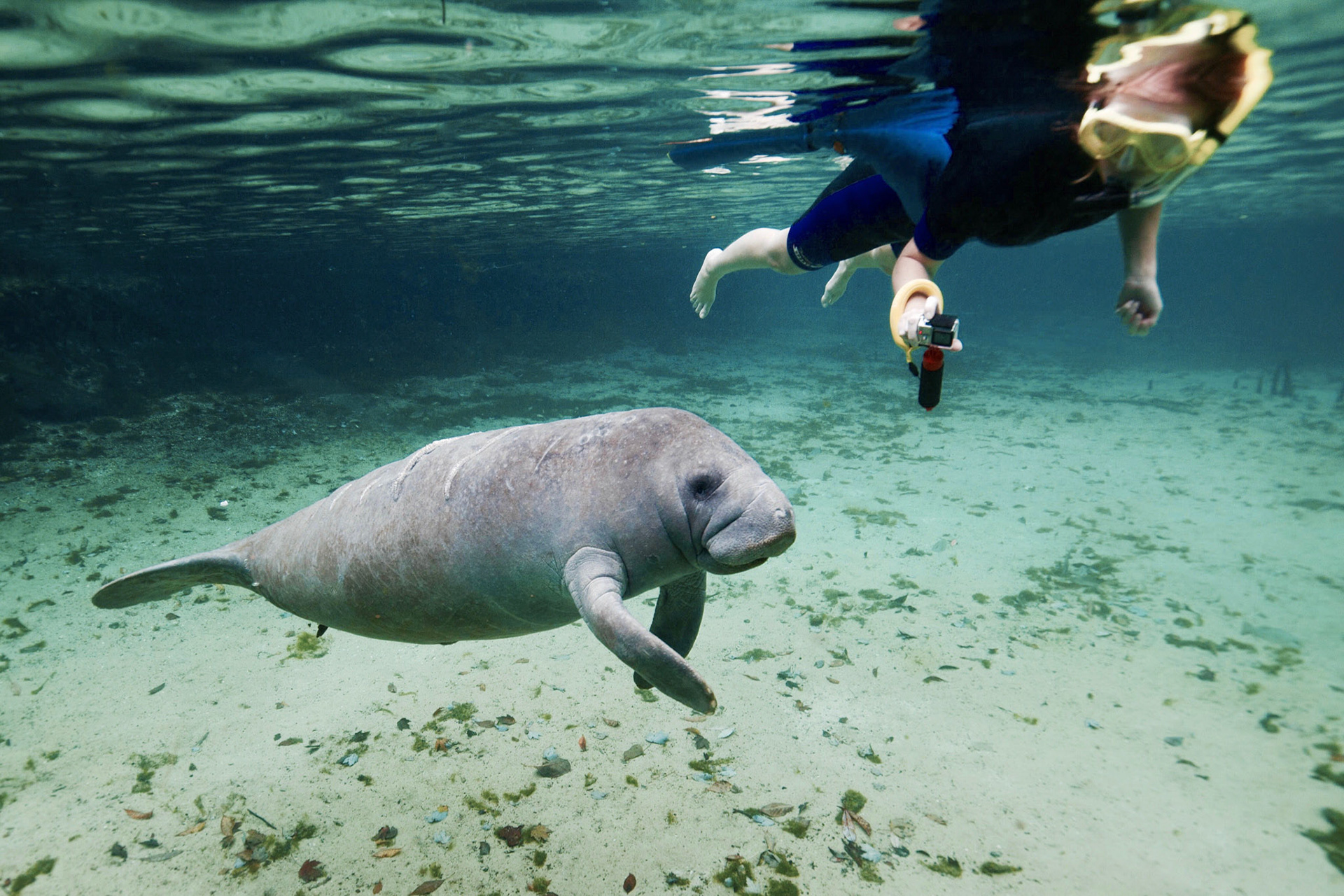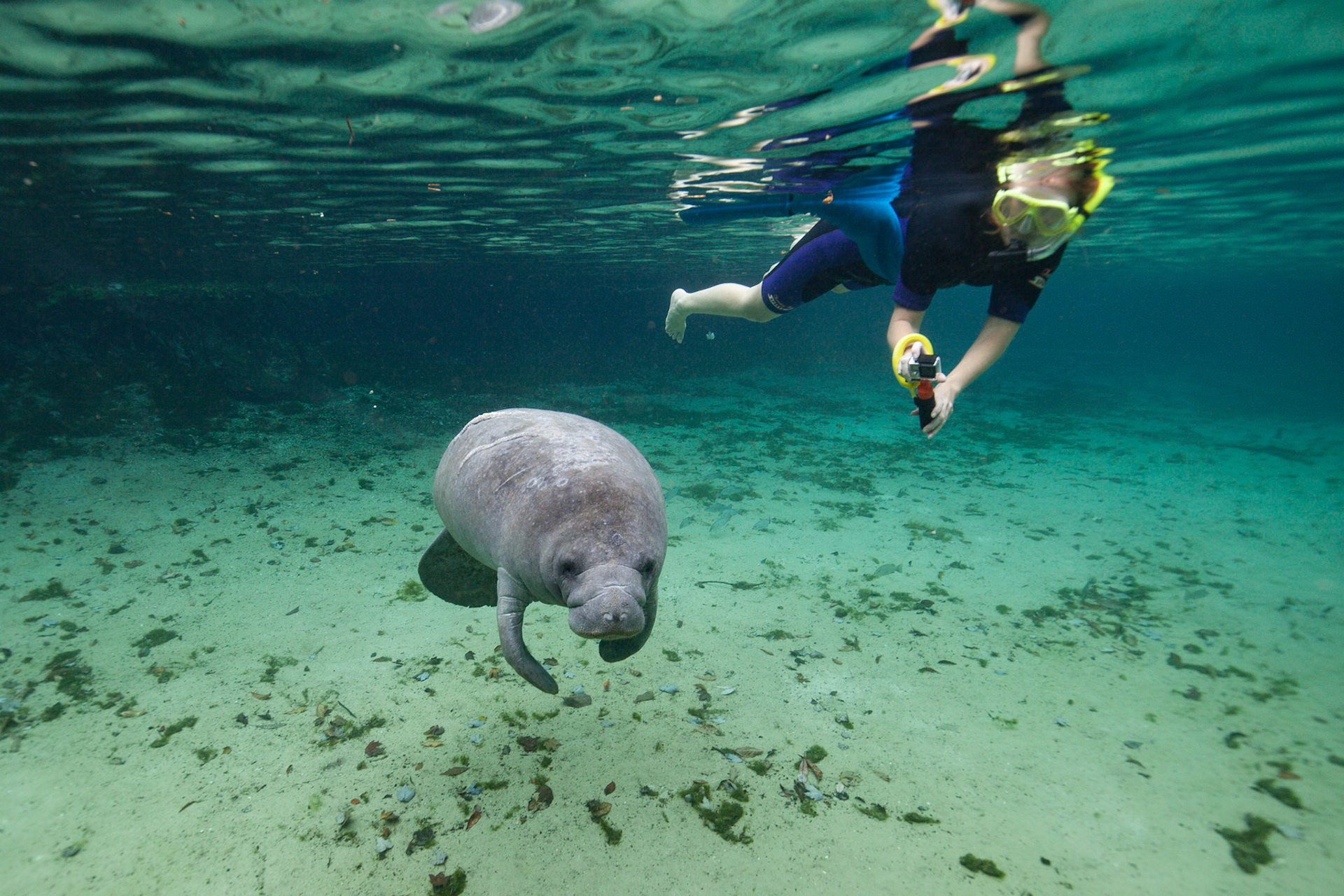




In our 2016 project, "Song to the Siren," we delved into the impact of watercraft collisions on the West Indian Manatee (Trichechus manatus) in Crystal Rivers, Florida, documenting the severe lesions caused by these collisions. These gentle creatures migrate from the chilly Gulf of Mexico to the warm springs like "Two Sisters" during winter, yet their lives are tragically endangered due to human-related factors.
Human activities, including the crushing impact of vessels, propeller slashes, and entanglement in structures, are leading causes of mortality among manatees. Large power vessels and barges navigating shallow waters pose immense threats, resulting in fatal encounters. Fishing gear, litter, and other human-induced hazards add to their vulnerability. Natural perils such as extreme temperatures and diseases further jeopardize their existence.
Our poignant series captures a mother and calf seeking solace in the warm, crystalline waters of the spring. The calf bears scars from propeller injuries, a prevalent occurrence attributed to the high volume of boat traffic in the region. The historical backdrop reveals how manatees were once hunted by indigenous Caribbean communities, a practice that persisted into the arrival of Christopher Columbus, albeit less prevalent in modern times.
Trichechus manatus' Conservation Status (2022)